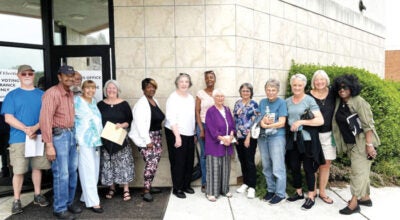Editorial: Evolving role for community colleges
Published 12:00 am Tuesday, June 10, 2008
By all accounts, Dr. Carol Spalding brings a strong resume and an abundance of energy to her new job as president of Rowan-Cabarrus Community College.
Those attributes should serve Spalding well as she takes the helm from Dick Brownell at a crucial point in the college’s history. It’s a time of rich opportunity, obviously, with the rise of the N.C. Research Campus in Kannapolis and the bio-tech industry jobs expected to follow. Amid the region’s loss of traditional manufacturing industries, the college has taken on a primary role in helping students and transitioning workers of diverse ages and backgrounds obtain the knowledge and training necessary to function in a 21st century economy.
Along with opportunities, it’s also a time of challenge for Rowan-Cabarrus and other community colleges. The N.C. Center for Public Policy Research, a non-profit think tank, recently completed a wide-ranging evaluation of the community college system, and it’s findings underscored the importance of the system while making the case that community colleges need increased resources as their responsibilities grow.
Although the current economic downtown has fueled worries about layoffs and downsizing, the center says that North Carolina will soon face a significant shortage of workers. By 2016, only eight years from now, community colleges will need to produce 19,000 more graduates a year ó a 75 percent increase. That’s on top of the 54 percent enrollment increase the community college system has experienced over the past decade. Already, the center notes, community colleges can’t keep up with demand for some popular programs such as nursing and health sciences. But hospitals and biotech labs aren’t the only places where the “help wanted” signs are expected to be flashing in coming years. North Carolina also will need more teachers, machinists, carpenters and truck drivers, among other fields that require advanced training. If community colleges are already struggling to meet demand, what’s going to happen in a few years? When prospective students have to endure lengthy waiting lists, it’s a lose-lose-lose situation. Students lose valuable time that could be spent working toward certification or degrees; prospective employers lose by not having an adequate pool of qualified candidates; and communities lose the chance to have more citizens benefitting from stable, higher paying jobs that can support a family, buy a home and invest in their neighborhoods.
This year, North Carolina will allocate nearly $900 million to community colleges. That’s a lot of money. But it’s also less than 10 percent of total education spending. As important as community colleges are now, they’ll be even more important in the future. Awareness of that fact is reflected in the diligence that went into Rowan-Cabarrus’ search for a new president, which started out with a field of 43 candidates. If our community colleges are going to meet the challenge of educating and training the future workforce, they will need strong leadership and support at all levels ó from the college board room to the state Capitol.


